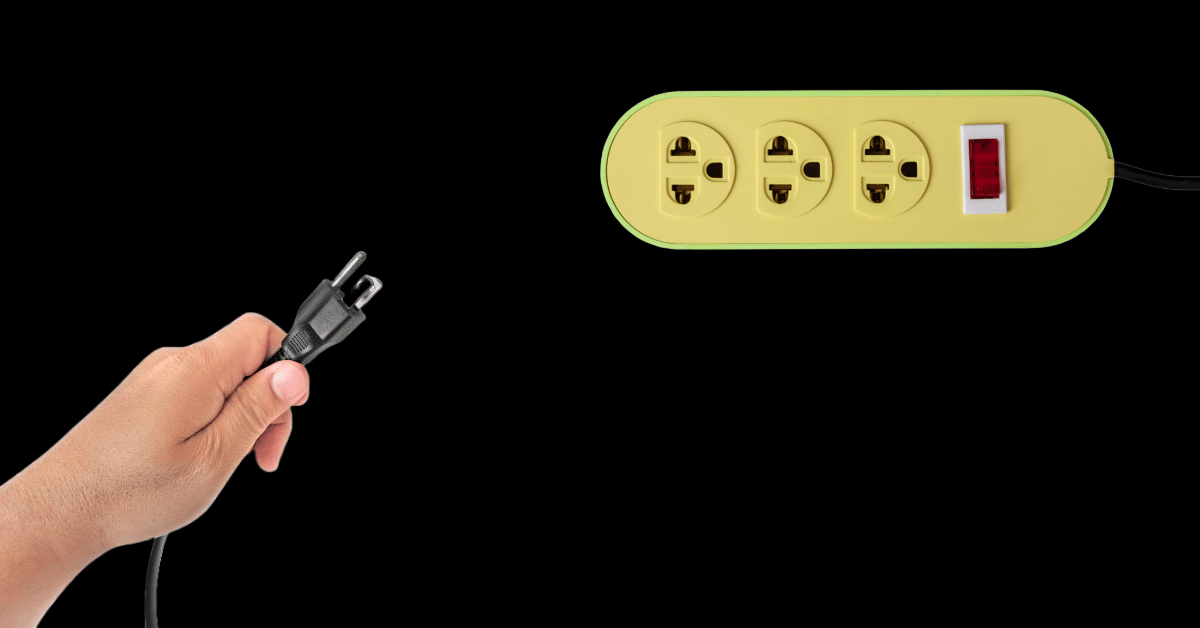
Wearing knockoffs used to be embarrassing. But now, finding a heckin’ good dupe is an actual flex.
So much so, that many influencers have built their entire platform around the premise that, often, there’s no need to splash out on the real thing. But Lululemon, for one, has had enough of people thinking the quality of copycats is just as good as their actual products. So they’re suing Costco for making lookalikes (because who’s going to pay $118 for a Scuba hoodie when you can get almost the exact same thing for $8??).
- Charlotte Ellis, Editor ♡
Want the secret sauce for running ads that actually get you leads?
Join us for a 90-minute workshop that replaces guesswork with a step-by-step setup for profitable campaigns that turn scrolls into sales.
In this session, you’ll learn:
✅ What to post, how often, and in which format (templates included!)
✅ How to set up your first (or next) campaign so it’s built to convert
✅ The one thing every successful campaign gets right
✅ How to track what’s working & tweak what’s not
PLUS The latest best practices for Meta ads in 2025.
Ask questions. Get answers. Leave ready to grow your sales and scale your business.
Wednesday, 30 July | 8:30–10:00am NZT | $59 NZD
WHAT’S HAPPENING IN MARKETING TODAY?
Lululemon sues Costco, Sprite and spicy brands collab & 123456 is still the most used password

Lululemon tries to sue Costco for making dupe apparel.
Last week, Lululemon filed a federal lawsuit (dramatic) against Costco for creating dupes of its products. Usually, brands that claim this kind of “trademark infringement” tend to rely on the fact that consumers have been tricked into thinking the “lookalike” is the real deal.
However, Lululemon argues that “dupe culture” is just as damaging. They claim it leads consumers to believe that the copied designs are of the same quality as the OG. The suit even cites a story from The Washington Post, “Is That Hoodie a Lululemon or a Costco Dupe? No One Has to Know But You” and hashtags like #LululemonDupes on TikTok where influencers promote the copycat products. Unfortunately for Lululemon, there are dupes of their products freaking everywhere and are not in any way limited to Costco. Welp.
Sprite collabs with spicy food brands for "Hurts Real Bad" campaign.
We all know Gen Z loves their spicy food. In fact, a survey last year by Rubix Food reported 78% of Gen Z said they either like or love spicy foods. 66% said they were more likely to purchase food if it was advertised as spicy. If you’re a spice freak like me, you’ll know that there is nothing better (except maybe an ice-cold beer) to soothe your flaming tongue like a freezing cold, ultra fizzy Sprite.
So, the brand has cleverly tapped into that insight with “Hurts Real Bad.” The campaign positions Sprite's lemon-lime soda as the perfect balm for foods like Buldak Fried Noodles, Takis, and Hot to K-Po. And the brand is partnering with each of them to prove it. Sprite, you little genius, you.
The most popular passwords, brought to you by Visual Capitalist.
Are you a stupid idiot? Take the free test today by checking if any of these are currently being used in your password vault. Insane that still, to this day, the most commonly used passwords are some form of consecutive numeric sequence, like 123456. Like what? Did we all remain 8 years old or? TBF, most of us are guilty of using a weak password at some point in our lives. Maybe even right now. But just how predictable can a password be? Thanks to a 2.5TB database of credentials exposed by data breaches, you can find out here.
-Sophie Randell, Writer
DEEP DIVE
500 newsletters later—what we've learnt from 17 months of YAP-ping

Newsletters take a lot of work, they’re a risky investment and highly susceptible to flopping (trust us on this one!). It’s tough to put all kinds of time and resources into something you don’t even know will work. But it’s even tougher to pull it off when you’re figuring it out on the fly.
Last week we published our 500th newsletter. So to learn how it's done, I naturally turned to Charlotte Ellis, our editor at YAP. We chatted about the ins and outs of becoming a newsletter craftswoman, how newsletters support businesses (just as YAP supports The Attention Seeker (TAS)), and what it took to bring 14,000 subscribers to YAP in less than a year and a half.
Sup Charlotte! I’ll just ask super broadly, why does YAP exist?
We talk a lot about audience building at TAS, and the idea being that you build your audience in stages (for more on this, check out The 5 Stages of Attention). Once you get to a point where you've got a pretty decent audience on social media and your business rate of growth is slowing, the next stage is to have an owned audience you can speak to anytime you want without the algorithm, like through a newsletter.
The idea also came about when there was a real possibility of a TikTok ban, we had a big audience on there and started wondering how to reach people with those limitations. When you have someone's email, you can reach them directly whenever you want. So that was the idea behind YAP as part of a bigger strategy for TAS: to build an owned audience, grow the brand, and eventually monetise the newsletter as a new arm of the business.
When you started, what kind of experience did you bring into the editor role?
I think what I brought to it was just a willingness to try things quickly. I have experience in editing content as a copywriter, and I have a good bit of experience from previous roles in picking up things that were either very new or very chaotic, and creating systems to make them run smoothly. So I brought experience in those ways, but as far as running a newsletter, none whatsoever!
What's it been like navigating the format of the newsletter and understanding what people want to read?
At the beginning, the content was a lot around the TAS team and what was happening with the business. We were thinking because lots of people follow us on social media, they’d want to read the newsletter to feel more connected to us. But we quickly realised people actually don’t care about that, because it doesn’t add value to them.
What people really wanted was to tap into our knowledge of how to succeed on social media, what's happening in marketing, and the fact we have our finger on the pulse from spending so much time online. That's the value we offer to our readers.
Has the newsletter’s growth been fairly organic?
Not as much as we originally thought. We thought we’d be able to move a lot of our audience from our socials and our original LinkedIn newsletter, which was also called Your ATTN Please. There were several thousand people on that subscriber list, and we thought a lot of them would hop over to the new newsletter. And some did, but not as many as we thought.
So most of our growth has been through paid ads, which is pretty common in the newsletter world. It's harder and harder to get people to sign up for a newsletter through social media, and unlike social media, you can't discover a newsletter organically. The only way people learn about it is either through word of mouth or seeing an ad, so that growth’s a lot harder.
We produce a marketing newsletter, but as you said, we’re also trying to advance the TAS brand. How do you strike that balance, making something that serves TAS’ goals, but is still fun and beneficial for readers?
We are part of TAS, but I also look at our newsletter as its own entity. I'll get requests from the team about TAS-related things to advertise in YAP and I always just try to think of it really objectively, making sure we’re promoting something that provides value for our audience and matches their interests.
The last thing I want is for our audience to feel like we're spamming them with things that aren't relevant to them. So I think of it from the perspective of what we can offer our audience, keeping in mind who they are and what they want from us.
What are some of the key learnings you've picked up in starting a newsletter from scratch?
Daily newsletters are very difficult. I wouldn't suggest that anyone try to do one unless they're going to go all in. It's not something people should go into thinking they’re going to monetise it, and it's going to be a great business within a year or two. It takes a really long time to build trust with your audience and if your content quality is crap, no one's going to read it.
If you want to earn people's attention in their inbox, your content has to bring something that no one else is bringing. You can't just create another newsletter. You have to have high quality content that's super valuable to people. And so that's what we try to do every day.
-Devin Pike, Copywriter
TREND PLUG
Yes you can!

Ever dealt with someone saying "you can't do that!", but they're so obviously wrong?
It's not always worth pushing back with facts and logic - sometimes, you gotta conserve your energy and just hit them with a "yes you can". It's an approach celebrated by this TikTok sound: a slower version of "Yes You Can", an unreleased song by rapper Young Thug, where he repeats the name of the song many, many times.
It's become a trending sound recently, not only for its catchiness, but because "nuh uh, yuh huh" arguments are a universal human experience. Whether people are saying you can't wear a wedding dress to prom or that being 2 years younger makes you too immature, you've always got an excuse to put your foot down and tell the misinformed and/or unenlightened exactly how it is.
How you can jump on this trend:
Take this sound, put the camera on yourself and lip-sync with the audio. Put a (real or fake) quote in onscreen text that says you can't do something (to which you're responding, "yes you can").
You can keep it real simple and just put the camera to your face. But for extra impact, see if you can film yourself doing the exact thing you're defending!
A few ideas to get you started:
"You can't have 4 coffees a day and still sleep well"
"I know you don't like this client, but we can't do this meeting without you"
"The cookies are for all the team. You can't have more than one" (film yourself taking an extra cookie)
-Devin Pike, Copywriter
FOR THE GROUP CHAT
😂Yap’s funniest home videos: Didn’t pop
✨Daily inspo: RIP Robin Williams
😊Soooo satisfying: IRL Fruit Ninja!
🍝What you should make for dinner tonight: Tofu Dan Dan Noodles
ASK THE EDITOR

Do hashtags work on Instagram and TikTok? – Faith
Hey Faith!
Hashtags don't really work on either platform, so there's no reason to spend time worrying about using them. Sure, they might give you a 1% lift in reach, but you are better off putting time into the things that will give you a 1000% lift instead. And this comes back to your storytelling.
Each piece of content should have a clear set-up, conflict, and resolution, along with a universal human truth. As for hashtags, they can become a scapegoat brands use to explain when content underperforms when, in reality, they've just posted content that's not good.
- Charlotte Ellis, Editor ♡
